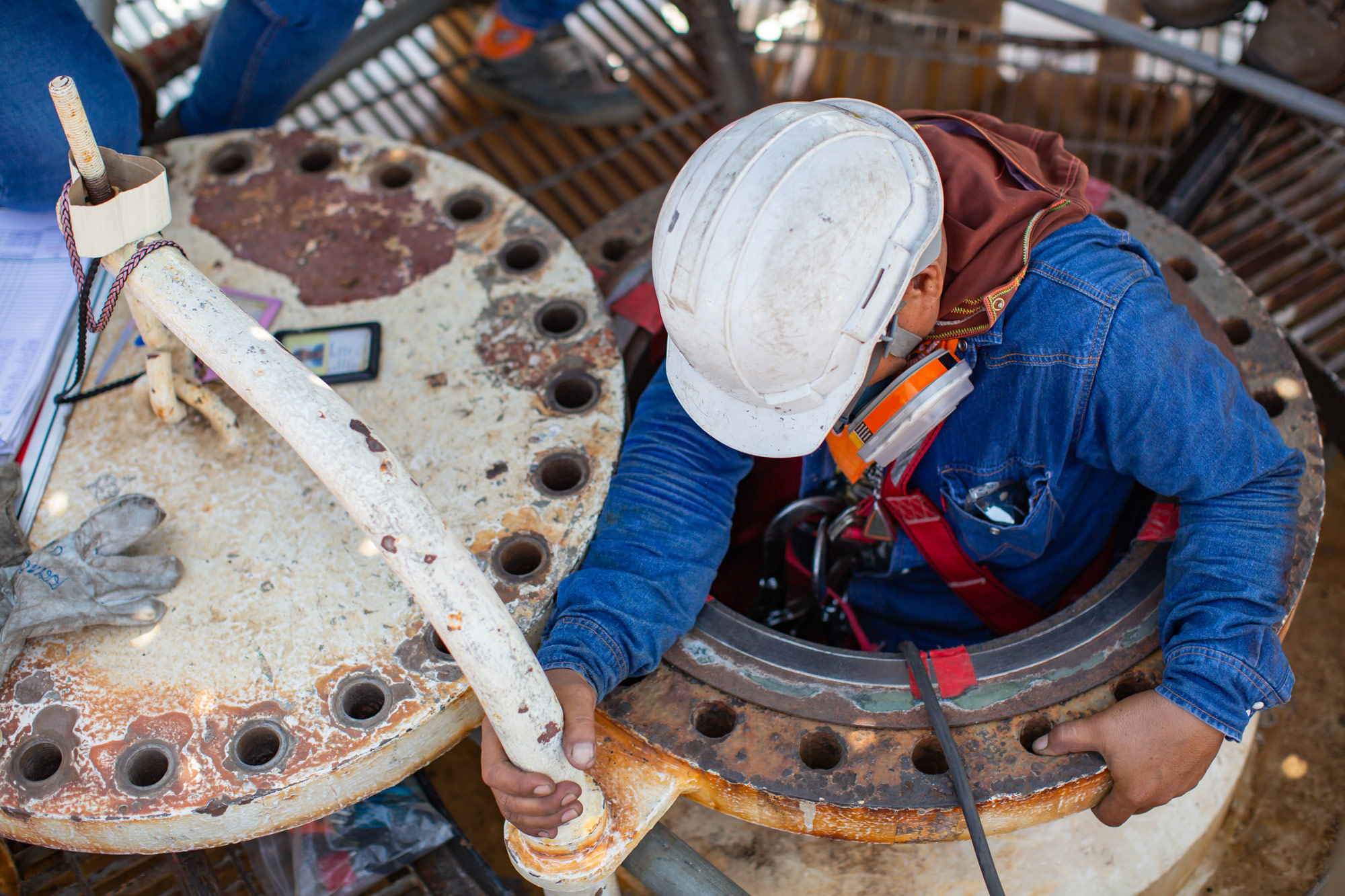
Small areas pose big risks: Staying safe in confined spaces
Hearing the term ‘confined space’ may make some of us claustrophobic, but what is the real danger? Confined spaces can be deadly, far beyond just an uneasy feeling. Working in confined spaces can be extremely dangerous and have a greater likelihood of causing fatalities or serious injuries.
Confined spaces can be entered physically with your body but are difficult to get in and out of, and they are not meant to be continuously occupied by anyone. Think of a septic system or upright storage tank with an entry hatch. These are areas that may need to be accessed for cleaning or maintenance.
Confined spaces can present real dangers to life and health. According to the Occupational Safety and Health Administration (OSHA), anywhere from 80 to 120 workers die annually from hazards associated with confined spaces. Common dangers include:
- Low oxygen
- Toxic atmosphere
- Fire/explosion
- Configuration hazards
- Engulfment
So how do we keep workers safe when confined space entry is necessary? First, training is needed to recognize confined spaces, identify hazards, and understand entry, exit, and rescue rules. Next, a plan must be developed and updated as necessary. That plan must include the following:
1. Written program
A written program is required, with a description of safety procedures for controlling hazards, safety equipment, and the process to evaluate and test for hazardous conditions.
2. Pre-entry certification
The plan must also include a pre-entry certification that the space is safe for entry. The certification must include the signature of the person supplying the certification, the date, and the location of the space, and be made available to each employee entering the space.
3. Written entry permit
Before entry into a permit space is authorized, the employer must prepare a written entry permit.
The entry permit may be the most essential part of the plan. It has all the safety information for the confined space entry, including but not limited to the following:
- The location of the space
- The hazards within
- Hazard control methods
- Entry/exit log
- Rescue information
Roles and responsibilities
Lastly, roles and responsibilities must be defined. Confined space jobs have four roles that must be filled.
Supervisors
Supervisors handle authorizing entry into the confined space, completing the entry permit, verifying training credentials, and coordinating rescue services.
Entrants
Entrants are the workers physically entering the confined space to perform tasks. They must be trained, authorized, and fully equipped to perform the work safely. Entrants must always maintain communication with the attendant.
Attendants
Attendants stay outside the confined space entrance and maintain contact with the entrant(s) through visual or audio communication. The attendant will alert rescue services if the entrant is in trouble. If there is an outside method of rescue, such as a lifeline, the attendant may use it to retrieve the entrant. The attendant cannot have other job duties besides attending the confined space.
Rescue
Rescue must be on standby to enter the confined space and retrieve an entrant in trouble. Rescuers are specially trained for this task and will have additional gear, including supplied air, mechanical retrieval tools, basket stretchers, and chemical suits.



